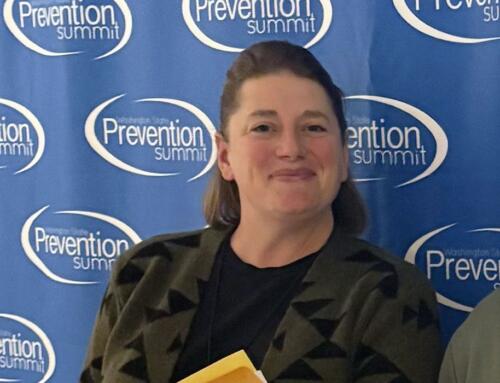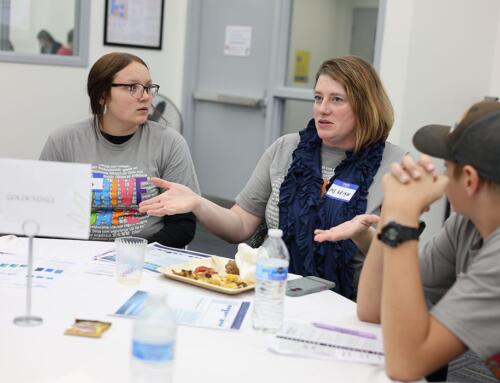In today’s rapidly evolving job market, the importance of Career and Technical Education (CTE) and Computer Science (CS) education cannot be overstated. However, offering these crucial educational opportunities can be particularly challenging for our smaller, rural school districts. In the ESD 112 region, which serves many rural communities, only 12% of students in our rural districts had access to CTE courses as of 2022. Recognizing the growing need for skilled workers in high-demand, family-wage careers, the Career Readiness team at ESD 112 has made strides to bridge this gap with the Rural CTE Cooperative. Thanks to targeted expansion efforts, that number has nearly doubled to 21%, providing more students the chance to explore and prepare for postsecondary education and careers.
These efforts are the result of an obvious need for our region. The modern economy demands more than just a high school diploma. Whether through a two- or four-year college, apprenticeship, certification programs, or other postsecondary education, students need advanced skills to secure high-demand, well-paying jobs. Yet, the opportunities to acquire these skills are often limited in smaller, rural districts. This disparity not only hinders students’ economic mobility in these areas but also exacerbates equity gaps between students in large and small school districts.
To address these challenges, the goal of this cooperative is clear: to decrease the equity gaps between large and small school districts and to increase postsecondary education attainment for all students. This is achieved through enhanced career-connected learning opportunities.
“By exposing students to a variety of careers and providing dual credit opportunities, we aim to ensure that students arrive at college with a head start, already equipped with several credits,” said ESD 112 Career Connect SW Manager Chad Mullen.
“This program provides students with high-quality, rigorous educational experiences that prepare them for careers previously unavailable to them, which not only give students hope but also open doors to future opportunities.”
The expansion of CTE in rural districts has been made possible through the generous support of the Biller Family Foundation and Career Connect Washington Program Builder funding. These funds have been crucial in allowing a cooperative of schools, led by Trout Lake School District and supported by ESD 112, to pilot and expand CTE offerings in the region. The challenge moving forward is to sustain and expand these programs without impacting general funding.
In the Rural CTE Cooperative model, students attend class live on Zoom from their schools. The teachers, hired from a statewide search to ensure the best candidates, join virtually from their remote location, leading students through a rigorous curriculum developed with input from employers about what their entry-level applicants need to thrive in their workplaces. To address CTE’s hands-on or work-based learning component, students can participate in labs, field trips, job shadows, internships, and practicums. For example, in the medical assisting course, where students must apply their learning and show their competency, they work with medical professionals from ESD 112’s School Nurse Corps Program assigned to their school district to practice and complete assessments of essential skills.
Kristin Schmid’s daughter, Hannah, is a Trout Lake School District senior and is currently taking a CTE Financial Algebra course through the co-op. She emphasized the care teachers take when breaking down complex topics for their students, making them easy to understand and applicable to real-life situations.
“One of the things Hannah loves most is the focus on real-life skills that will help her make smart financial choices in the future,” she shared. “For instance, they recently talked about comparing job offers and whether to take a higher-paying job or one with better benefits. This kind of practical knowledge is so valuable.”
Now in its second year of implementation, the program is seeing significant progress. Fifty-one students from six school districts in this region have taken courses, including Careers in Education, IT Fundamentals, Advanced Placement Computer Science, Financial Algebra, and Medical Assisting. Medical Assisting also serves as an apprenticeship preparation program, providing a pathway to registered apprenticeship right out of high school.
Another exciting opportunity in the Careers in Education pathway allows students to earn paraprofessional certification. This certification opens up a valuable career path for the student and helps address staffing shortages in local school districts by enabling graduates to work in their own communities.
Kylie Uffelman, a White Salmon Valley School District parent, is excited about her son’s attitude toward education and its impact on her family.
“My son is thriving in the AP computer science class and eager to share his newfound knowledge with our family,” Kylie said. “It’s inspiring to see his engagement, and I’m hopeful for my younger child that she may benefit from similar opportunities in the future.”
The driving force behind this project is to create hope and opportunity for rural high school students in Southwest Washington, ensuring they have a bright future after high school graduation. Their ultimate goal is to make this model financially sustainable and scalable, extending its benefits throughout Washington and beyond. By expanding access to CTE and CS courses, not only are students prepared for high-demand careers, but they are building stronger, more resilient communities.
To learn more about the Rural CTE Cooperative, please contact the Career Connect SW team:
Melanie Walker, ESD 112 CTE & Career Connected Learning Coordinator, melanie.walker@esd112.org
Chad Mullen, ESD 112 Career Connect SW Network Manager, chad.mullen@esd112.org





 ESD 112 equalizes educational opportunities for learning communities through innovative partnerships, responsive leadership, and exceptional programs.
ESD 112 equalizes educational opportunities for learning communities through innovative partnerships, responsive leadership, and exceptional programs.